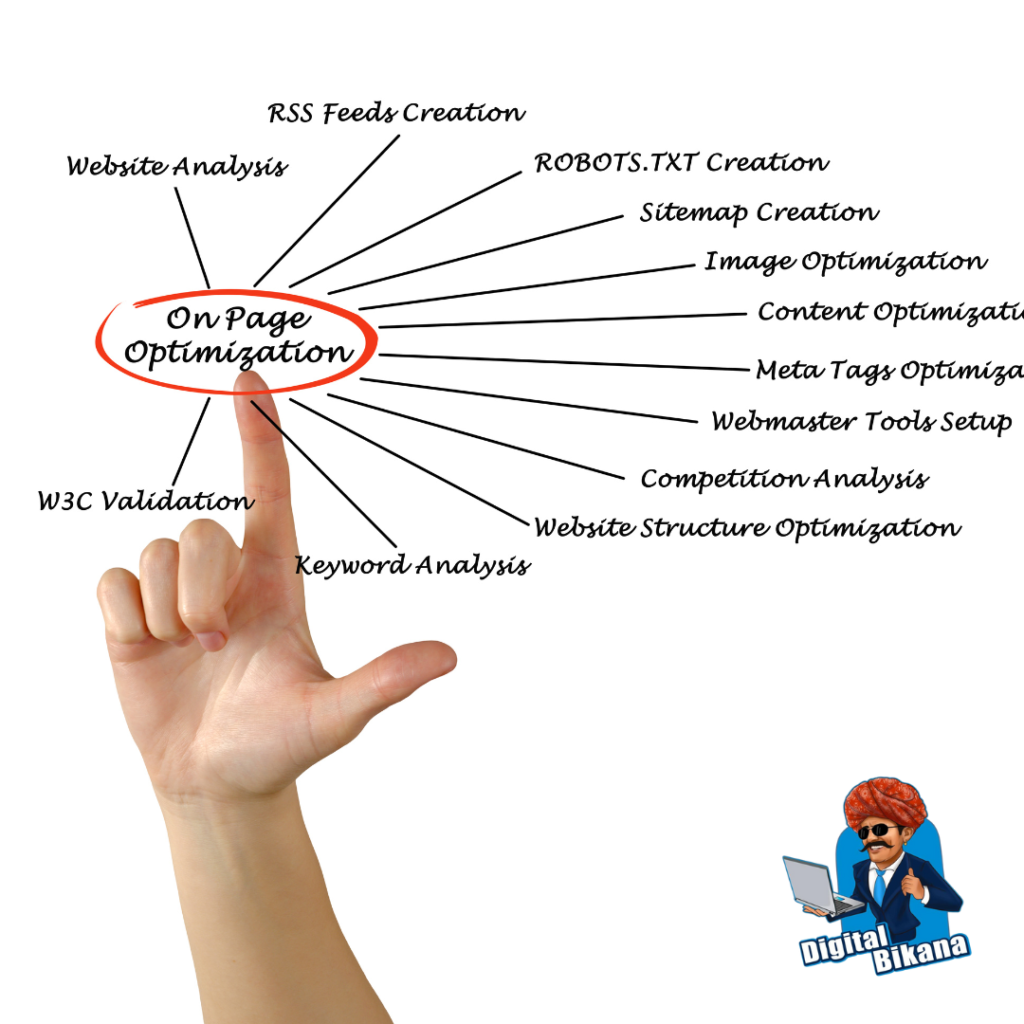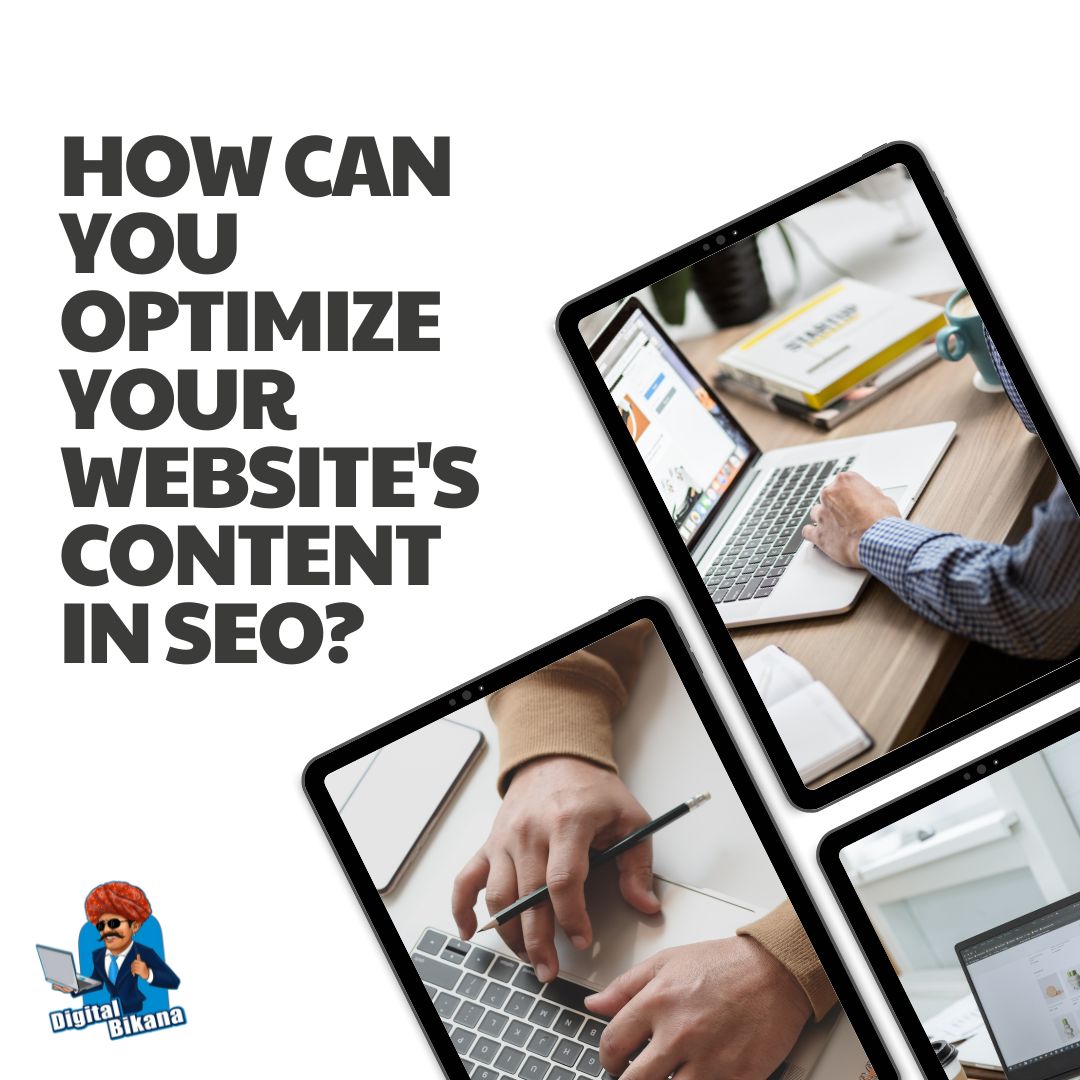How can you Optimize your Website’s content for SEO?
In this article we are going to talk about How can you optimize your website’s content for SEO? In the world of online marketing, search engine optimization (SEO) is crucial for attracting more visitors to your website through organic search results. One crucial aspect of SEO is content optimization, which involves tailoring your website’s content to make it more visible and relevant to search engines.
How can you Optimize your Website’s content for SEO?
In this comprehensive article, we will explore various strategies and best practices to optimize your website’s content for SEO. By implementing these techniques, you can improve your search engine rankings, increase organic traffic, and enhance your overall online presence.
1. Conduct Keyword Research
Keyword research is the foundation of content optimization for SEO. It involves identifying the specific words and phrases that your target audience uses when searching for information related to your website’s topic or industry. By using keyword research tools and analyzing search trends, you can discover high-volume, relevant keywords to incorporate into your content. These keywords should be strategically placed in your website’s titles, headings, meta descriptions, and throughout the body of your content to increase its visibility to search engines.
2. Create High-Quality, Engaging Content
Content quality is paramount for effective SEO optimization. To optimize your website’s content, focus on the following aspects:

a) Relevance
Ensure that your content aligns with the interests and needs of your target audience. It should provide valuable information and address their queries or pain points.
b) Uniqueness
Create original and unique content that stands out from competitors. Avoid duplicate content, as search engines prioritize fresh and original material.
c) Readability
Structure your content in a user-friendly manner, using headings, subheadings, bullet points, and paragraphs. Use concise sentences and easy-to-understand language to improve readability.
d) Visual Elements
Incorporate relevant images, videos, infographics, and other multimedia elements to enhance user engagement. Optimize these visual elements by using descriptive file names and alt tags.
e) Length
While there is no definitive rule for content length, aim for comprehensive, in-depth articles that cover the topic thoroughly. Longer articles or content pieces often rank higher in search engines, meaning they have a better chance of appearing at the top of search results.
Read Also: How Can You Optimize your Website for Mobile Usability?
3. Optimize On-Page Elements
On-page optimization involves optimizing various elements of your web pages to improve their visibility to search engines. Consider the following practices:
a) Page Titles and Meta Descriptions
Craft compelling and keyword-rich titles and meta descriptions that accurately describe your content. These elements, such as page titles and descriptions, are visible in search engine results and can impact the likelihood of people clicking on your website.
b) Heading Tags
Use relevant heading tags (H1, H2, H3, etc.) to structure your content hierarchically. Include your primary keywords in the headings to signal their importance to search engines.

c) URL Structure
Make sure your website URLs are short, clear, and include keywords that are relevant to the content. Avoid using lengthy, confusing URLs with random strings of characters.
d) Internal Linking
Incorporate internal links within your content to connect related pages. This helps search engines understand the relationships between your pages and improves navigation for users.
Read Also: What is the Significance of Internal Linking in SEO?
e) Mobile-Friendliness
Ensure that your website is mobile-responsive and optimized for mobile devices. With the increasing number of mobile searches, mobile-friendliness is crucial for SEO success.
4. Build High-Quality Backlinks
Backlinks are simply links from other websites that direct people to your website. They play a significant role in SEO, signaling to search engines the credibility and relevance of your content. To build high-quality backlinks:
a) Create valuable content that other websites would want to link to naturally.
b) Reach out to relevant websites and influencers in your industry to request backlinks.
c) Guest blogging on reputable websites can help generate backlinks and increase your visibility.
d) Monitor your backlink profile and disavow any spammy or low-quality links that may negatively impact your SEO.
Read Also: What is the Significance of Backlinks in SEO?
5. Regularly Update and Optimize Your Content
SEO is an ongoing process, and regularly updating and optimizing your content is crucial for maintaining visibility and relevance. Keep your content up to date by adding new information, refreshing statistics, and addressing emerging trends. Monitor keyword performance and make necessary adjustments to your content strategy. Additionally, analyze user engagement metrics, such as bounce rate and time on page, to identify areas for improvement and make necessary optimizations.
You can also checkout this digital marketing institute to learn digital marketing course by enrolling in our course Or Contact Digital Bikana on +91-8949483728
Conclusion:
Optimizing your website’s content for SEO is a fundamental step towards improving its visibility, organic traffic, and search engine rankings. By conducting thorough keyword research, creating high-quality and engaging content, optimizing on-page elements, building high-quality backlinks, and regularly updating your content, you can enhance your website’s SEO performance. Remember that SEO is an ongoing process, and staying abreast of algorithm updates and industry trends is essential for sustained success. Implement these content optimization strategies, and watch your website soar to higher search engine rankings, increased organic traffic, and improved user engagement.

